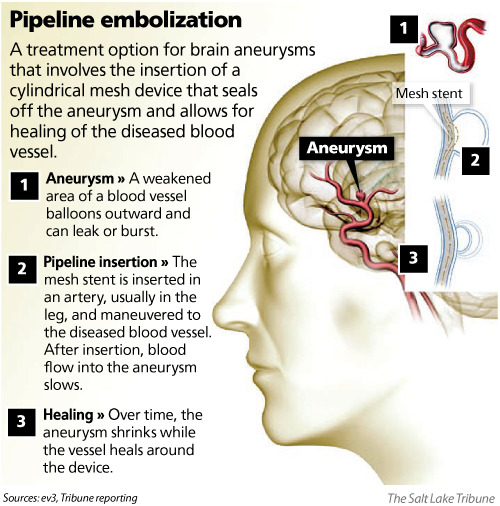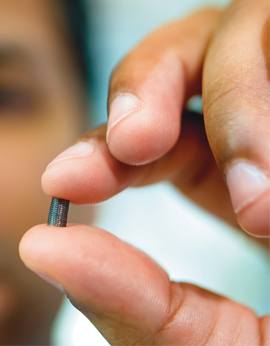
It’s Not Over
My health insurance company is going to hate me by the time this year is over. Fingers crossed that this means next year will be a tamer year as far as medical procedures go.
Yesterday I had my appointment with Dr. Bain, the neurovascular surgeon my case was referred to at the end of August when my pre-op imaging revealed a 4-5 mm aneurysm on my internal carotid artery, right next to my pituitary tumor. It was a fantastic appointment; I have never felt so comfortable about my options as I do now after spending half an hour talking with Dr. Bain.
My husband and I were easily the youngest people in the waiting room by about 30 years. Another “why me?” moment for me, I guess. After a 20-minute check-in delay because the only receptionist was in the bathroom ?, we got called back fairly quickly by Dr. Bain’s nurse. Typical appointment stuff: review of systems and a neuro exam. Easy peasy.
We didn’t have to wait long for Dr. Bain. We dove right in to reviewing all my imaging; the CTA that confirmed the aneurysm, the MRI it was first spotted on and my follow-up MRI the morning after surgery. I asked him to look at my MRI from March that diagnosed the tumor to see if it was missed by the radiologist. It was challenging to see because the cuts were different. He pointed out something that may have been the aneurysm, but hindsight is always 20/20. We basically came to the conclusion that it was probably there but just not visible based on the specific imaging sequences I had.
Next, we discussed treatment options. Not knowing what to expect at all, and based on my own research, I had the preconceived notion that no way would we do any intervention; mine would be a case of conservative management, or “watch and wait.” But Dr. Bain explained that, aside from aneurysm size, there are three main risk factors that determine whether intervention should be taken: patient age, family history of subarachnoid hemorrhage, and smoking status. I don’t have the family history nor am I a smoker. Based on the size of my aneurysm (4-5 mm), the risk of spontaneous rupture is only 0.05%. However, believe it or not, I actually have my age working against me, as the risk of rupture generally increases with time. So if I were 60 or 70 years old, he would recommend conservative treatment. But since I am only 30, it would be a better idea to actually treat the aneurysm.
So now what? We went through three treatment options:
- Endovascular Coiling: This is the option I assumed he would recommend based on my research. This involves threading a catheter from the femoral artery up into the aneurysm in the brain and releasing tiny metal coils directly into the aneurysm itself. The coils will cause a clot to form, closing off the aneurysm. However, he said this typically isn’t ideal for my type of aneurysm.
- Craniotomy: Very invasive, involving shaving the head, removing the bone, dissecting out the vessel, and placing a surgical clip on the aneurysm to immediately close it off from the vessel. Certainly a reasonable option, but as I said, very invasive.
- Endovascular Stenting: I hadn’t even considered this option because I hadn’t come across it as an option in my research. This is where he got really excited and started drawing pictures of the stent and how it works. The stent is known as the Pipeline® Embolization Device and it is the first flow diversion device approved by the FDA. As mentioned in the picture below, the stent is placed over the opening to the aneurysm and slows blood flow into the aneurysm. Because the aneurysm is a dead end, blood flow into it will eventually become sluggish enough to allow a clot to form. Over time, the aneurysm will shrink and the device itself will actually have tissue from the vessel grow over it, effectively causing it to become part of the vessel wall. Other vessels branching off the artery will not be blocked because, even though they are covered by the mesh, the body’s demand to keep blood flowing through the vessel to the rest of the body (as opposed to the dead end of an aneurysm) prevents a clot from forming in the branching vessels.

 This is quite possibly one of the coolest things I have ever seen. If I have the procedure done, I will need to be on dual antiplatelet therapy (aspirin and Plavix) for six months, maybe longer depending on how things look at follow-up. He said he assumed we’d be considering pregnancy in the near future. Well, yeah. He assured us that we could work around things ok with the antiplatelet therapy, discontinuing it in enough time prior to delivery. Hopefully I will be off the therapy completely by the time we get to that point anyway! But he told us to take some time to think about what we wanted to do and let them know when we’ve made a decision.
This is quite possibly one of the coolest things I have ever seen. If I have the procedure done, I will need to be on dual antiplatelet therapy (aspirin and Plavix) for six months, maybe longer depending on how things look at follow-up. He said he assumed we’d be considering pregnancy in the near future. Well, yeah. He assured us that we could work around things ok with the antiplatelet therapy, discontinuing it in enough time prior to delivery. Hopefully I will be off the therapy completely by the time we get to that point anyway! But he told us to take some time to think about what we wanted to do and let them know when we’ve made a decision.
So David and I talked about it last night. Our basic conclusion: why wait? Let’s just get it done so we don’t have to worry about it again.
I called today and spoke to Dr. Bain’s nurse to get scheduled. Based on when the specific procedure room is available, my procedure is scheduled for November 21st. I will start the antiplatelet therapy on November 11th, then have an aspirin/Plavix resistance panel drawn on the 16th to make sure I’m metabolizing ok, because there can be some genetic variations with the metabolism of Plavix (oh, that blasted CYP2C19… sorry, it’s the pharmacist in me…) She said some people take a week off and some people take two weeks off, but I’m only going to take one week. I’ve missed enough work as it is. My coworkers will kill me if I miss any more work.
So another procedure. Yay. Hopefully this will be the last one. This has truly been a year for the books. A really long chapter in the book called life.
?ribbonrx

0 thoughts on “It’s Not Over”
So excited to see you so excited 🙂
gosh, you are so strong and amazing! More surgery does not sound fun but it sounds like you are in good hands and then once you recover hopefully you can start moving forward on the baby plan
Oh my goodsness. I’m so sorry you have to have another, but I definitely agree that getting it out of the way is the best option. Isn’t it weird when we get excited about these things? I remember when I found out I could have a laproscopic hysterectomy instead of a full abdominal one I was thrilled. I was scared I’d have a massive scar and would be even sicker than I was when I had the laproscopy. I hope this is your last one for like…EVER.
I am just ready to have it done! I don’t want to walk around knowing there’s a ticking time bomb in my head! And I hear you about the procedures being less scarring; I’ll just have a small mark on my leg from accessing the femoral artery instead of needing to shave my head!